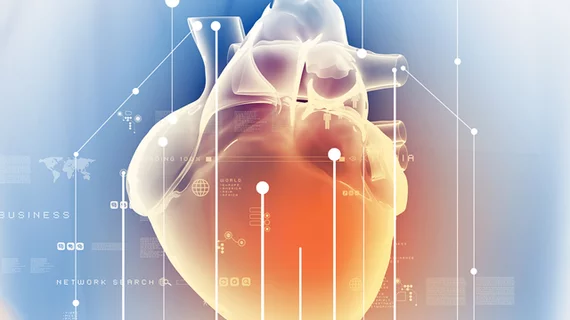Four-dimensional (4D) flow CT produced similar intracardiac blood flow patterns compared to the current reference standard obtained with 4D MRI, according to recent research in Radiology.
In this prospective study, authors gathered coronary CT angiography and 4D flow MRI data from 12 patients. Three observers analyzed intracardiac left ventricular flow (LVF) characteristics, including basic flow parameters, kinetic energy and the four major intracardiac flow components—direct flow, retained flow, delayed ejection flow and residual flow.
Flow patterns derived from 4D CT were like those obtained by 4D MRI, according to lead author Jonas Lantz, with the department of medical and health sciences at Linköping University, Sweden, and colleagues.
“We show that our 4D flow CT method, based entirely on clinically available CT data, can produce both qualitatively and quantitatively similar intracardiac blood flow patterns in a cohort of patients with heart disease, compared with the current reference standard, 4D flow MRI,” Lantz et al. wrote.
Although the modalities performed similarly, authors noted they have advantages and disadvantages based on the study being performed. For example, CT requires ionizing radiation, but it produces a higher image quality. MRI, meanwhile, doesn’t deliver radiation to patients, but it lacks the spatial resolution in CT.
In a related editorial, a pair of authors from the Medical University of South Carolina (MUSC) claimed “one of the clear advantages” offered by 4D CT is the ability to use traditional clinical coronary CT angiography data sets without using a separate modality.
In 4D MRI, a separate acquisition for blood flow patterns is needed, unlike 4D CT which can gather this data retrospectively. This extra step could add a potential five to 20 minutes per exam, authors wrote.
There are certain limitations, both studies found, which 4D CT would have to overcome before clinical use, wrote Joseph Schoepf with the Division of Cardiovascular Imaging at MUSC and colleague.
Just as MRI requires more time and additional computing power, 4D flow CT computational analysis may require up to 10 hours for each cardiac cycle, making improvements in processing time a focus.
Overall Schoepf et al. found the new CT technique to be a “promising alternative” to 4D flow MRI, and if added to the arsenal of CT myocardial perfusion imaging and CT-derived fractional flow reserve, could make the modality a unique imaging tool.
“With the potential clinical advent of 4D flow CT, a third aspect of functional analysis would become feasible, further contributing to the use of CT as a one-stop shop imaging modality,” they wrote.

